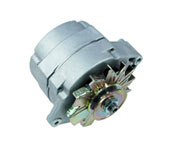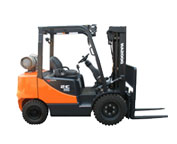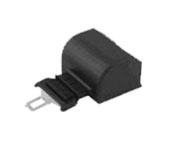
Brake for Forklift - A brake wherein the friction is provided by a set of brake shoes or brake pads which press against a rotating drum unit called a brake drum. There are several particular differences among brake drum kinds. A "brake drum" is commonly the definition given whenever shoes press on the interior surface of the drum. A "clasp brake" is the term utilized in order to describe whenever shoes press next to the outside of the drum. One more type of brake, called a "band brake" makes use of a flexible band or belt to wrap round the outside of the drum. Where the drum is pinched in between two shoes, it could be referred to as a "pinch brake drum." Like a standard disc brake, these types of brakes are somewhat uncommon.
Early brake drums, previous to nineteen ninety five, needed to be consistently modified to be able to compensate for wear of the drum and shoe. "Low pedal" can result if the needed modifications are not carried out sufficiently. The vehicle can become dangerous and the brakes could become ineffective whenever low pedal is mixed along with brake fade.
There are quite a few various Self-Adjusting systems meant for braking on the market today. They can be classed into two separate categories, the RAI and RAD. RAI systems are built-in systems which help the device recover from overheating. The most recognized RAI manufacturers are Lucas, Bosch, AP and Bendix. The most well-known RAD systems consist of Volkswagen, VAG, AP, Bendix and Ford recovery systems.
The self adjusting brake would normally just engage if the forklift is reversing into a stop. This method of stopping is acceptable for use where all wheels use brake drums. Disc brakes are utilized on the front wheels of vehicles today. By functioning only in reverse it is less likely that the brakes would be adjusted while hot and the brake drums are expanded. If adapted while hot, "dragging brakes" can occur, which raises fuel expenditure and accelerates wear. A ratchet tool that becomes engaged as the hand brake is set is another way the self repositioning brakes may work. This means is just appropriate in functions where rear brake drums are utilized. If the emergency or parking brake actuator lever goes over a particular amount of travel, the ratchet advances an adjuster screw and the brake shoes move in the direction of the drum.
Located at the base of the drum sits the manual adjustment knob. It can be adjusted utilizing the hole on the other side of the wheel. You would have to go under the vehicle together with a flathead screwdriver. It is very vital to be able to adjust every wheel equally and to move the click wheel properly because an uneven adjustment could pull the vehicle one side during heavy braking. The most efficient method so as to ensure this tedious job is completed carefully is to either lift each and every wheel off the ground and hand spin it while measuring how much force it takes and feeling if the shoes are dragging, or give every\each and every one the same amount of clicks manually and then perform a road test.
![]() Click to Download the pdf
Click to Download the pdf
Forklift Parts








Lift Parts Express
TOLL FREE: 1-888-695-7994
Garden Grove, California
forkliftpartsgardengrove.com
Email Us
About Us



